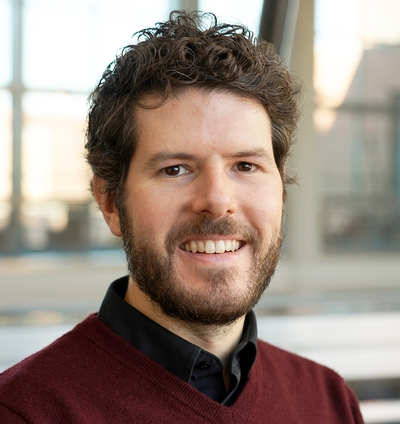
Thomas C. Bulea, Ph.D.
Investigator
Neurorehabilitation and Biomechanics Section
NIH Clinical Center
Research Topics
Dr. Bulea's research is focused on the use of functional neuroimaging, neural interfacing and rehabilitation robotics for evaluation and treatment of movement disorders. A recent emphasis has been on the design and clinical evaluation of pediatric exoskeletons. He leads the NeuroRobotics Group, whose research utilizes novel neural interfacing approaches to study movement disorders and their treatment with devices and technology with the goal of optimizing human-machine interactions to engineer better rehabilitation outcomes.
Biography
Thomas C. Bulea is a tenure track investigator within the Neurorehabilitation and Biomechanics section of the Rehabilitation Medicine Department at the NIH Clinical Center where he directs the Neurorobotics Research Group.
Dr. Bulea received his B.S. in mechanical engineering from The Ohio State University and his M.S. and Ph.D. in biomedical engineering from Case Western Reserve University, where his research focused on development of hybrid neuroprostheses to restore standing and walking function in individuals with paralysis from spinal cord injury. He completed a post-doctoral fellowship at the National Institutes of Health and a visiting post-doctoral fellowship at the University of Houston, both focused on the use of electroencephalography (EEG) to study cortical activation patterns relating to standing and walking function. He joined NIH as a staff scientist in 2014, where he focused on creating new signal processing tools to extract movement-related cortical activity from EEG and fNIRS and led a team to develop and evaluate a new pediatric exoskeleton for children with cerebral palsy. He has been a tenure track investigator in the NIH Clinical Center since 2021.
Dr. Bulea's research has been recognized through receipt of a NIH Clinical Center Director's Award and an NIH Director's Award. Dr. Bulea also serves as the Training Director for the Rehabilitation Medicine Department and as an Associate Editor for two journals: IEEE Transactions on Neural Systems and Rehabilitation Engineering and Wearable Technologies.
Selected Publications
- Lerner ZF, Damiano DL, Bulea TC. A lower-extremity exoskeleton improves knee extension in children with crouch gait from cerebral palsy. Sci Transl Med. 2017;9(404).
- Short MR, Damiano DL, Kim Y, Bulea TC. Children With Unilateral Cerebral Palsy Utilize More Cortical Resources for Similar Motor Output During Treadmill Gait. Front Hum Neurosci. 2020;14:36.
- Chen J, Hochstein J, Kim C, Tucker L, Hammel LE, Damiano DL, Bulea TC. A Pediatric Knee Exoskeleton With Real-Time Adaptive Control for Overground Walking in Ambulatory Individuals With Cerebral Palsy. Front Robot AI. 2021;8:702137.
- George KA, Damiano DL, Kim Y, Bulea TC. Mu Rhythm during Standing and Walking Is Altered in Children with Unilateral Cerebral Palsy Compared to Children with Typical Development. Dev Neurorehabil. 2021;24(1):8-17.
- Devine TM, Alter KE, Damiano DL, Bulea TC. A randomized cross-over study protocol to evaluate long-term gait training with a pediatric robotic exoskeleton outside the clinical setting in children with movement disorders. PLoS One. 2024;19(7):e0304087.
Related Scientific Focus Areas

Biomedical Engineering and Biophysics
View additional Principal Investigators in Biomedical Engineering and Biophysics


This page was last updated on Thursday, September 4, 2025